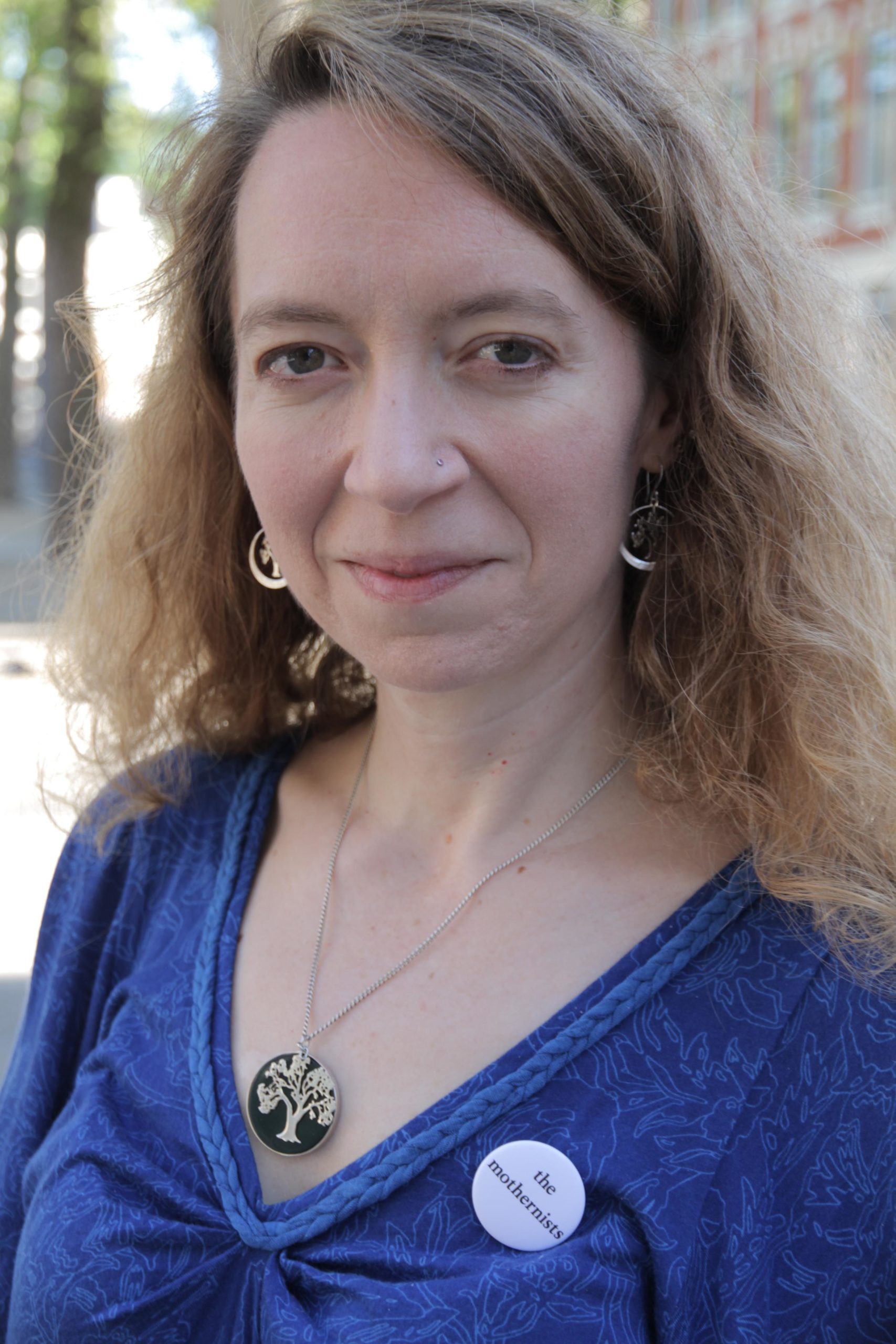Rachel Epp Buller is Associate Professor of Visual Arts and Design at Bethel College. Much of her creative and critical (and often collaborative!) practice centers on intersections of art and the maternal, including her book, “Reconciling Art and Mothering”(Ashgate) and an in-progress collaboration on Inappropriate Bodies. She and Kerry Fast met in person only after the publication of “Mothering Mennonite.”
When the invitation came to contribute a written snapshot to the #WeAreMenno series, the word collaboration jumped out at me from the website. As a college professor, I love collaborations. Collaborating with students and colleagues, whether in class discussions or in larger projects across disciplines, gives me energy.
One of the best and most rewarding collaborations of which I have been a part however, happened with someone I’d never met in person.
Four years ago, I embarked on compiling and publishing an edited volume of essays, what would come to be called “Mothering Mennonite.”
Through the recommendations of colleagues, I found my way to my co-editor, Kerry Fast. She and I brought different perspectives to the project – she a religious studies scholar, professional editor, and childless Canadian with ties to Old Order communities, and I an artist and feminist art historian, mother of three, living in the U.S. – but our varied backgrounds offered a stronger multidisciplinary critical eye for our roles as editors. When an essay needed greater religious or historical context, Kerry knew which scholar’s writings would be most helpful to the essayist, just as I could point the author to potentially relevant writings in maternal studies.
Our contributors, too, became our collaborators as we wrestled with critical analyses of the intersections of Mennonites and mothering. Historians, educators, social workers, creative writers, students, retirees, women and men – each brought their own background and perspectives to our shared topic as we asked questions, pushed ideas forward, and worked together to strengthen writing.
And in this way, collaboration also offered a challenge to me, to consciously move outside of myself and remember that my maternal experiences are not the same as those of many others.
This collaboration with a diverse group of authors influenced our understanding of the book itself, which Kerry and I had planned to call “Mennonite Mothering.” As the book took shape, our many and varied maternal experiences became a strong underlying theme. Mennonite Mothering sounds like one singular entity, as if there is only one religiously, ethnically, culturally correct way to be a Mennonite Mother. By swapping the words, from “Mennonite Mothering” to “Mothering Mennonite,” Kerry and I hoped to convey more clearly that the two words, the two ideas, can be combined in many ways, whether in Old Colony communities in Mexico and Canada, or in culturally assimilated North American groups, or in broader understandings of Mennonite as an ethno-religious or family heritage. A number of our writers addressed what Mothering Mennonite can mean when one is not in fact a mother – drawing attention to voices often marginalized within the church: single women and men, couples who face infertility and child loss, and couples who may choose to remain childless.
The collaborative working and thinking on this topic has been on-going.
In churches, at conferences, and in small group setting, I have heard continued interest in discussing, analyzing, and questioning memories and cultural understandings of Mennonites and maternal work. None of this, however, would have been possible without the initial collaboration with my co-editor Kerry, which in hindsight seems like a metaphor for a larger lesson about working with other people. Our work together happened through phone calls, lengthy emails, and many virtual exchanges of documents, and each time we communicated, I was surprised and pleased by the ways in which her skills complemented my own and filled in the gaps in my knowledge.
Too often, we try to go it alone. We take care of only ourselves, or we are reluctant to ask for help, or we assume that only we can do what needs to be done. This, then, is perhaps the best part of collaboration for me: the realization that,



